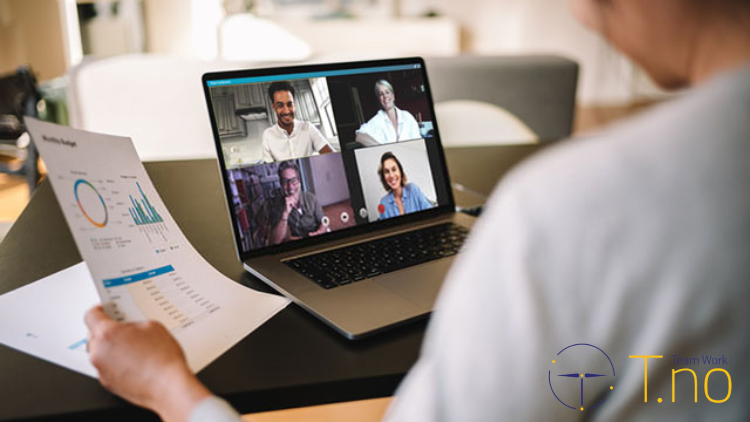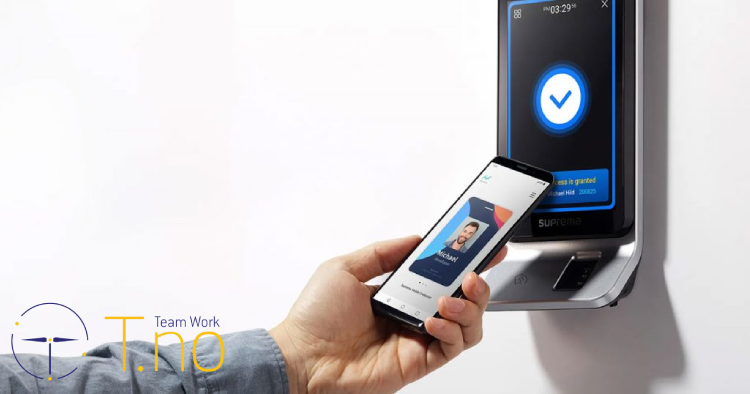

2024-08-16پشتیبانی تینو
To solve the problem of attendance and absence of remote employees, it is suggested to use mobile attendance and absence applications. These applications, with biometric identification, GPS, and two-step authentication capabilities, allow accurate and secure registration of employees' entry and exit.
In addition, integration with human resources and financial management systems, comprehensive reporting and sending notifications, help managers to better monitor the activities of remote workers.

Managing the presence and absence of remote employees is one of the most important challenges in today's organizations, which has become more important due to the increasing popularity of remote work. Here we will review different solutions and technologies to solve this problem.
Mobile attendance applications are one of the best solutions to solve the problem of remote employees. These applications provide several features:
Record entry and exit time: Employees can easily record their entry and exit time through smartphones.
Geo-location monitoring: Using GPS technology, the geographical location of employees is recorded to ensure that they are working in designated locations.
Notifications and reminders: Send notifications to employees to remind them when work starts and ends.
Time and project management systems can also help to improve the management and solve the problem of the presence and absence of remote employees:
Assign tasks and track progress: Managers can assign tasks to employees and track their progress online.
Reporting and analysis: These systems are capable of generating comprehensive reports of employee performance that help managers evaluate the productivity and efficiency of remote employees.
Biometric technologies such as facial recognition and fingerprints can help increase accuracy and security in attendance registration:
Face recognition: Employees can recognize their faces using their smartphone cameras and record their presence and absence.
Fingerprint: Some applications use fingerprint technology to verify the identity of employees.
Communication and collaboration tools such as Zoom, Microsoft Teams, and Slack can help improve attendance management for remote workers:
Online meetings: holding regular online meetings helps managers to ensure the presence and activity of remote employees.
Instant messaging: These tools allow sending instant messages and communicating with employees quickly.
Establishing clear rules and policies regarding working hours and attendance records can help improve the management of remote employees:
Specific working hours: determining specific working hours and informing employees about the organization's expectations.
Regular reporting: requiring employees to provide regular reports of daily and weekly activities.
Creating a positive and motivating organizational culture can help to improve the management of the presence and absence of remote employees:
Encouraging self-motivation: encouraging employees to be self-motivated and responsible for their duties.
Provide feedback: Provide regular and constructive feedback to employees to improve performance and motivation.

What is the meaning of the panel of managers and employees in solving the problem of the presence and absence of remote employees? Managing the presence and absence of remote employees requires tools and systems that help managers and employees communicate and coordinate more effectively.
One of these tools is management and employee panels that are embedded in attendance software. These panels play an important role in organizing and tracking daily activities and ensuring that employees perform their duties. In the following, we will describe the function and importance of these panels.
• Administrators panel
1. Monitoring and follow-up of activities
The administrators panel is a tool that allows administrators to comprehensively and accurately monitor the attendance and absence of employees. This panel includes functions such as:
Viewing arrivals and departures in the employee traffic software: Managers can view the arrivals and departures of employees instantly and in real time.
Analytical reports: The panel of managers provides comprehensive and analytical reports on the attendance and absence, delays, overtime and leave of employees.
2. Allocation of tasks and projects
One of the duties of managers is to assign tasks and projects to employees. The admin panel provides the possibility to determine and track tasks and projects:
Assignment of tasks: Managers can assign specific tasks to employees and determine the timing of their performance.
Progress tracking: It is possible to track the progress of projects and tasks and view their status.
3. Communication and coordination by the panel of managers
The admin panel helps facilitate communication and coordination with employees:
Sending messages and notifications: Managers can send various messages and notifications to employees to inform them of changes and new requirements.
Holding online meetings: it is possible to hold online meetings and make necessary arrangements through the administrators' panel.
• Employee panel
1. Registration of attendance by the employee panel
The employee panel allows them to easily record their attendance:
1. Increasing productivity and efficiency
Using the panels of managers and employees helps to increase the productivity and efficiency of the organization. Managers can monitor employee activities more effectively and employees can perform their duties more accurately.
2. Transparency and effective communication
Management and employee panels increase transparency in the organization. Attendance information, tasks and projects are transparently available and communication between managers and employees is improved.
3. Reducing errors and frauds
By using attendance systems and management panels, the possibility of fraud and errors related to attendance registration is minimized.

Managing the presence and absence of remote employees is a challenge that can be solved using modern technologies and appropriate management approaches.
The use of mobile applications, time and project management systems, biometric technologies, communication and collaboration tools, setting clear rules and policies, and creating a positive organizational culture can help organizations manage this problem well and improve the productivity and efficiency of remote employees. to increase
1. What technologies can be used to accurately record the presence and absence of remote employees?
Answer: To accurately record the presence and absence of remote employees, the following different technologies can be used:
Mobile applications: Using GPS and biometric technologies such as facial recognition or fingerprints, these applications enable accurate registration of attendance and absence.
Project management platforms: These platforms help managers to track the tasks and progress of projects and manage the presence and absence of employees based on them.
Online access control systems: These systems allow administrators to access and manage attendance data through the Internet.
2. How to ensure the security and accuracy of attendance systems for remote employees?
Two-step authentication - advanced technologies - security protocols
3. What are the challenges in using online attendance systems for remote workers and how can they be overcome?
Internet connection challenge and alternative solutions such as offline recording and synchronization after connection, technical settings challenge and privacy challenge training solution
Categories
Popular Categories